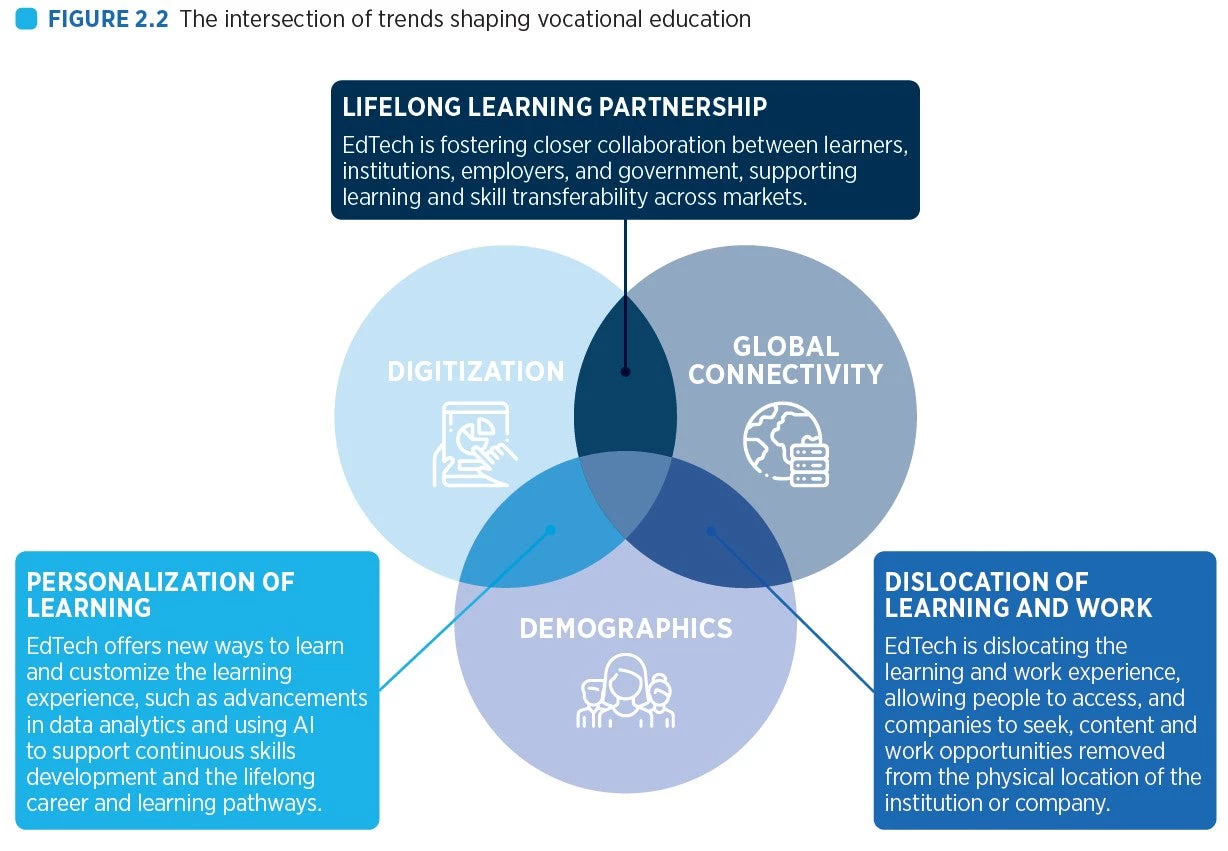The speed of technological change — and the need for worker skillsets to keep pace — is dizzying. The Fourth Industrial Revolution (4IR) is changing how traditional sectors operate, and how workers learn new skills. Blurring lines between the physical, biological, and virtual worlds are changing the skills needed for the jobs of the future. Acquiring these skills can mean the difference between being left behind and having a promising future. And with COVID-19 transforming the way we work and live, the need for low-cost, scalable, and effective remote learning tools has taken on a new urgency.
But how can we meet this challenge?
To impart new technical skills, countries have generally relied on technical and vocational education and training (TVET). UNESCO estimates there were around 74 million formal TVET learners worldwide. However, this belies an even greater demand outside of traditional vocational schools and training centers, with hundreds of millions of learners globally accessing training through education technology (EdTech) solutions. With EdTech models gaining traction among learners, there is a huge potential to leverage innovative digital platforms and business models to improve the access, relevance, and quality of technical education and workforce training. In our new report, we demonstrate that applying EdTech approaches can allow for a potentially game-changing disruption of TVET systems.
Three megatrends underscore the importance of incorporating EdTech solutions. The first is a demographic transition: people will enter the TVET system at a variety of ages, so the systems will need to incorporate multi-generational learning needs. The second is the acceleration of global connectivity: TVET systems will need to cater for, and compete in, both local and global markets. And finally, expanding digitization: TVET systems can support the transition to an increasingly digital economy by facilitating a wide diffusion of skills.
Responding to these trends through the development of training programs and facilities in each country, many of which face fiscal constraints, will be an uphill battle. For instance, under current institution-based learning models, an additional 1.5 million teachers per year are needed to meet the world’s education needs. While this applies more broadly than TVET, it illustrates a significant challenge faced by developing countries.
EdTech is at the intersection of these trends and can bolster the TVET sector. Our report argues that TVET systems need to leverage the reach and personalization of learning that technology can offer. Compared to traditional in-person approaches to TVET, EdTech-based solutions can extend access to skills by overcoming proximity and capacity constraints of physical classrooms , while also improving content relevance and quality by using artificial intelligence (AI) and data analytics to customize the learning experience. For example, digital platforms like Coursera are taking the most in-demand courses offered by top universities and Big Tech partners and making them available to a global audience. From a very small startup when IFC invested, Coursera now offers job-ready skills and learning opportunities to almost 100 million learners worldwide, with over half in emerging markets.
With a focus on personalization, EdTech platforms are making a difference. For example, Duolingo, a language learning platform with over 300 million learners, captures every interaction the learner makes with the application and uses gamification to incentivize engagement and learning outcomes. Customized learning can also be integrated with TVET, which reduces employers’ hiring costs by improving the likelihood of a good match.
With 65 percent of today’s children expected to work in jobs that do not yet exist, education and training systems need to do more to keep pace with technological change and provide access to lifelong learning pathways. The findings of this report demonstrate how integration of EdTech models in existing TVET systems can help address the skills gaps in emerging markets. For example, Korea’s Smart Training Education Platform (STEP) has created an online marketplace for accessing e-learning content and providing support for training institutions to incorporate e-learning into their programs.
To truly unleash EdTech’s potential in improving TVET systems, companies and policymakers need to work together. The private sector and government have a common goal to pursue EdTech solutions that can prepare people for the jobs of the future. For the private sector, developing or adapting solutions to meet the needs of underserved populations can support the scale-up of their business models; for government, EdTech solutions can offer a cost-effective way to provide wider and more flexible access to skills acquisition for their workforce. With the impetus provided by the COVID-19 pandemic, EdTech is no longer a nice-to-have feature; it is now an essential component of a well-developed national TVET system.






Join the Conversation